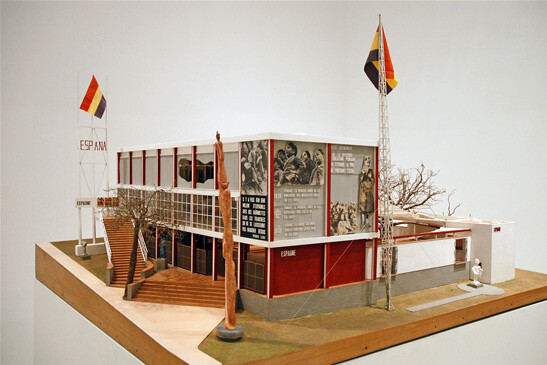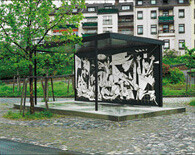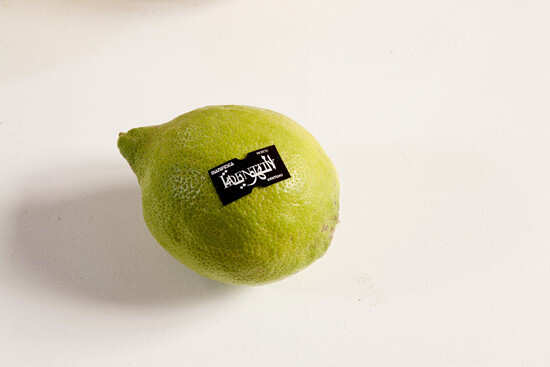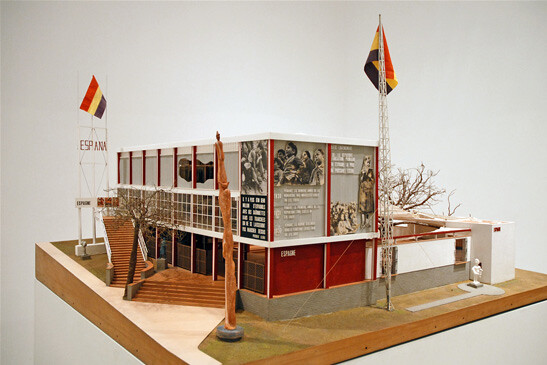Spain is shaped from a mosaic of regional identities, like Basque and Catalan, that demand a full articulation of a national identity of their own, which leads us to consider Spain as a manifestation of a nation without a consistent state. Being based in the Spanish Basque Country allows me to examine national identities through the prism of Spain’s heterogeneity. The solidification of the concept of the nation-state across the globe has made us aware of the risks of nationalism turning towards self-defensive, protectionist, populist politics. In this context, we cannot forget that nationalism is not only what shapes the cohesive form of the nation-state, but is also a force that threatens its cohesion. I am obviously referring to the many nationalisms that coexist within the same unified nation-state. For both ethnic minorities and regional identities, under the formal vindications of national, sub-national, secessionist, separatist, independence, and other nationalisms, the same idea of the nation-state is at stake.
Hence, even if pluralism and ethnic diversity are central questions for any nationalism, a distinction arises between what we might call, for lack of better terms, “immigrant minorities,” and “indigenous minorities.” This draws attention to the relevance of the nation-state in any consideration of cultural diversity in today’s Europe, positioning it in two contrasting guises, on the one hand as the “solution,” and on the other as the “problem.” For the first, “immigrant minorities,” the nation-state is the solution, in the sense that they look to it (and have nowhere else to look), enabling them both to preserve their distinctive cultural identity and to overcome the socially and economically marginal position they generally occupy. From the point of view of “indigenous minorities,” the state is a problem, since they see its present organization and structure as an obstacle rather than as a means to their economic and political advancement and cultural survival. These groups seek the decentralization of state power. Somehow, this dual relationship positions the nation-state as the main paradox for this accommodation of cultural diversity: it has become too small to control the economic forces that determine the livelihoods of its citizens and yet too large to satisfy the expressions of their localized identities.
In a period such as ours, when the term “national” has become a merely relational category that articulates diverse parts of the world system, the arrangement of the local, the regional, and the national tends to articulate a geographic block (or world order) where the perception of sub-nationalist cultures, and separatist communities, can be grasped as allegorical forms. In this way, the tension in between these different ethnic groups, or different “imagined communities,” can only be overcome by deploying these allegorical structures towards resolving the collective fantasies of those nationalisms with an idea of the nation itself.


Critical Regionalism
In the postmodern debate within the field of architecture, an approach Kenneth Frampton has termed “critical regionalism” has attempted to counteract the dislocation and lack of meaning in modern architecture by using contextual forces to give a sense of place and meaning.1 This has designated a new kind of regionalism in architecture, an attitude against international flows that function to standardize linguistic patterns and formal expressions throughout the West. The question here revolves around the fact that, in a globalized world, it seems that there are no alternatives to the concept of the nation, even when it is little more than an entity or unit composed of relatively semi-autonomous strong regionalisms. In the field of architecture, this universal versus particular dialectic has been widely discussed. According to Frampton, critical regionalism should adopt the critical elements of modern architecture for its universal, progressive qualities, but at the same time value formal responses that primarily follow the regional context.2
What distinguishes this regionalism from vernacular nostalgic historicism and reactionary jumps to the past, in a sort of variation on local traditions, is precisely the designation of criticality. And while critical regionalism suffers from the same disease as postmodernism, passing from being an analytical cognitive tool to evoking a kind of kitschy stylistic vernacularism, in its origin the addition of “critical” served to distinguish between at least two kinds of regionalisms: one ascribed to the architectural debate around surpassing homogenization and lack of identity in modern architecture, and another more based in exclusively political or shortsighted terms. So the task here becomes to rethink the possibility of a truly critical regionalism extended to other cultural realms, practices, and discourses.
During the mid-eighties, when these theories where at their peak, Alex Tzonis and Liane Lefaivre visited Spain, claiming:
What we see in Spain is not just a regional architecture whose purpose is to manufacture false identities for political or exotic artifacts of consumer society. We refer to a new kind of regionalism, which we call critical regionalism.3
In fact, their words were enough to distinguish two regionalisms: a progressive one, and a populist one. Yet this distinction was not broadly acknowledged, and it could be said that the stereotype won, transforming critical regionalism into a style based almost exclusively in the vernacular.


But, in an interesting way, Frampton went on to position the Catalan nationalist architectural movement that emerged in the early fifties with the Barcelona-based Grupo R, founded by Oriol Bohigas and Josep Maria Sostres, as an example of critical regionalism.4 This group was trapped in a very complex cultural landscape, in which they tried to escape the centralism of the state while also vindicating the legacy of, GATEPAC (Grupo de Artistas y Técnicos Españoles para el Progreso de la Arquitectura Contemporánea), the first rationalist architectural movement in Spain, founded in the early thirties, and whose memory was later eclipsed by state power.5 Grupo R considered modern culture to be a true hybrid of universality and regionalism. Another representative of critical regionalism was another Barcelonean, José Antonio Coderch, who discovered a harmony between the vernacular tradition of the brick—typical of the Mediterranean—with the modern and universal form. This Mediterranean touch was also present in the works of its predecessors, the members of the GATEPAC, for whom a Mediterranean style meant a search for its own roots (and this could already be seen in the first issue of the magazine A.C. in 1931) and a means of proving that another origin for a modern Mediterranean architecture was possible.
It could be said that until the eruption of the Spanish Civil War in 1936, Spain was a paradise for modern architecture. Around 1935, modern architecture was in a precarious position with the rise of German National Socialism, the Soviet Union and Italian Fascism; but the Spanish Left stood by Le Corbusier. And it was also the time to reclaim the native; Ibiza became a mythical place for a whole generation of architects and other intellectuals and artists such as Walter Benjamin and Raoul Hausmann. In 1937, during the Paris World Exposition, the Spanish pavilion was designed by GATEPAC member José Luis Sert, together with Luis Lacasa, and exhibited Pablo Picasso’s famous painting Guernica, a commission of the government of the Second Republic that Picasso produced as a denunciation of the bloody destruction of the Basque village of the same name by the alliance of the Spanish fascists with the Nazis. This architecture could be seen as a precursor to critical regionalism while remaining, at the same time, one of the highlights of Spanish rationalism. Within the pavilion, a selection of popular furniture and sections devoted to folklore and craft from different Spanish regions was also shown (as examples of the traditional re-contextualized within a modern frame). Furthermore, Lacasa proposed to use bricks as a primary material, but this idea was declined for being too time-consuming to produce.6
The principal discussion during that period revolved around the use of rationalist codes and building laws as a more suitable method of production. At the same time, the discussion revisited the debate around materials, arguing that they should be related to the specificities of the country (as in the case of the bricks), combining geographical, climatic, and technological criteria. The resistance to the universalism and commonality of the modern, with its tabula rasa of building principles, found a counter-discourse in the Spanish case, which was about using what rationalist methodologies brought in structural terms, not simply as a veneer.7 So, the pavilion itself should be considered as not only a pioneering example of critical regionalism, but also a model of Spain’s own complex multi-identitarian reality.8


What may interest us today, however, concerns the role architecture played in understanding the weight of regional identities within the boundaries of the same nation-state, and how this “multiculturalism” is both the problem and the solution to the tension between the “nation” and the “national.” Paradoxically, this pioneering model for critical regionalism had to be displaced by some thousands of miles from its native soil in order to effectuate the geographic, climatic, and landscape aspects inherent to its theory. The pavilion itself then became a trope, a utopian one—a building in exile. An elliptical curve could be drawn between past and present to map the historical continuum of this utopian vision—and it is indeed this utopian conception of local context that became the target of the harshest critiques of this very concept of critical regionalism.
More recently, critical regionalism has been associated with Gayatri Spivak, who, in a conversation with Judith Butler, said that “critical regionalism is a difficult thing because of the potency of nationalism, even ethnic sub-nationalism and, on the other side, because the transnational agencies go nation-state by nation-state.”9 Here, the distinction between nationalisms and sub-nationalisms remind us of the coexistence and struggle involved in both. On a general level, Spivak proposes a deconstructive alternative to nationalism that is predicated on the deconstruction of rigid national identities.10 In the same dialogue, Judith Butler began with the question of statelessness:
What state are we in that we ask these questions about global states? And which states do we mean? States are certain loci of power. The state is not always the nation-state. We have, for instance, non-national states, and we have security states that actively contents the national basis of the state. So, already, the term state can be dissociated from the term “nation” and the two can be cobbled together through a hyphen, but what work does the hyphen do?11
It is not by chance that the current configuration of the art collection at the Museo Reina Sofia in Madrid not only revolves around its well-known masterpiece the Guernica, but also locates the architectural model of the Spanish pavilion as one of its cornerstones, as well as a replica (built in 2001) of the 1937 monument by Alberto Sánchez which stands at the gates of the museum, situated as a metaphorical double of the legendary architecture that is no longer present (perhaps an unconscious wish for some).12 The museum as a site for pluralism and cultural diversity, including the multi-ethnic, offers a seductive image that ultimately leads to the imagining of a republic. But what it represents is the nation-state itself, because the Museo Reina Sofia is the national museum par excellence, as we find in the case of regional, provincial museums for contemporary art.


Regionalism and Biennials
If Museo Reina Sofia represents the national museum, there are, on the other hand, dozens of other museums and art centers that epitomize regionalism, many of them born in the last decade, the golden age of institutionalization. Among these are CGAC in Santiago de Compostela, MARCO in Vigo, LABoral in Gijón, Artium in Vitoria, sala rekalde in Bilbao, MUSAC in León, EACC in Castellón, CAC Málaga, CENDEAC in Murcia, and CAAM in Las Palmas of Canary Island, to name just a few. Regions, or Autonomous Communities such as Galicia, Asturias, Castilla-León, the Community of Valencia, and others are represented in this way. Anyone who has been there can attest to the local specificities I am addressing here.
While regional politics make these museums possible, the same regional authorities are at the same time unable to guarantee their future, or any structural and financial stability capable of withstanding the current economic crisis. In their aim of becoming international and capable of universalizing their local specificities, these institutions will, sooner rather than later, find themselves failing, at least without the element of criticality. One wonders how much of the art world is run by these local regional cultural policies rather than national ones: I would venture to say the vast majority! And in this way, critical regionalism becomes its own necessary imperative. Avoiding local specificities by way of adopting a universal position doesn’t work either. In such conditions, the representation of Spain is not a simple task.
There is a shifting movement back from regional artistic identities to the new museums of identity. The eighties saw a celebration of regional artistic diversity across Spain, encouraged through the spirit of openness, plurality, and coexistence that characterized the post-Franco transition to democracy. The recognition and development of artistic traditions rooted in the regional was not so farfetched as it may be now. It is worth noting that any hint of talk about specific cultural or regional differences in Spain’s current art context becomes the focus of dispute. At the same time, the label “Spanish artist” is met with similar resistance. However, some of these differences have been absorbed by this other discourse on identity tied to the corporate branding of today’s new institutionalism, in which the identity of the museum and the very prestige of the city or region are constantly at stake. Here we find the museum acting as economic emblem and product of the area in which it operates, with its corporate identity focused on promoting tourism in the province and appealing to the interests of businesses, which see the museum as an ideal venue for launching their products.
The past six years have seen Spain hosting two editions of Manifesta. In the summer of 2004 the Basque town of San Sebastian was the site for Manifesta 5, and this year Manifesta 8 was hosted by the Region of Murcia—more specifically, the “the Region of Murcia in dialogue with Northern Africa.” How do we interpret the fact that Spain has had two editions of the same biennial—one whose aim is to explore the psychological and geographical peripheries of Europe, its borderlines and spaces of conflict? The previous stereotypes of the East-West axis have been replaced by a North-South distinction, in which the Mediterranean Sea is the site of a clash of civilizations.
In this vein, Murcia represents Europe’s present-day boundary with Northern Africa and its relations with the Maghreb. But does this say more about North-South, European, and African borders than about the configuration of the nation-state itself? In the global, multicultural biennialization of everything, art and culture function as a lubricant for political campaigns—allowing Spanish right-wing politicians (such as the president of the Region of Murcia) to celebrate this multiculturalism claiming that “Manifesta 8 represents the best contemporary artistic expression of cultural dialogue between Europe and North Africa, which in Murcia, as a hub of immigration, we know all too well.”13 As these words express, what is at stake now, more than ever, is the “problem” (of immigration) rather than the solution. As long as Murcia is governed by the euphemistically “center” Spanish right wing, the question of immigration remains a hot issue.
Meanwhile, in the Basque case (Manifesta 5), the implications of art and culture as a facilitator of social issues—namely, peace—was less apparent, maybe due to the fact that the Basque Country lives with social and political conflicts (even terrorism) that resist easy containment and engagement. Whatever the case, the question of difference and exoticism projected from an outside gaze arises—not only from faraway places, but also from neighboring regions of the same national entity, making cultural boycott and disinterest just sad options that miss the point. It is not difficult to draw parallels between biennialization and multiculturalism, for as Slavoj Žižek has put it:
The ideal form of ideology of this global capitalism is multiculturalism, the attitude that, from a kind of empty global position, treats each local culture the way the colonizer treats colonized people—as “natives” whose mores are to be carefully studied and “respected.” That is to say, the relationship between traditional imperialist colonialism and global capitalist self-colonization is exactly the same as the relationship between Western cultural imperialism and multiculturalism: in the same way that global capitalism involves the paradox of colonization without the colonizing Nation-State metropole, multiculturalism involves patronizing Eurocentrist distance and/or respect for local cultures without roots in one’s own particular culture. In other words, multiculturalism is a disavowed, inverted, self-referential form of racism, a “racism with a distance”—it “respects” the Other’s identity, conceiving of the Other as a self-enclosed “authentic” community towards which he, the multiculturalist, maintains a distance rendered possible by his privileged universal position.14
In 2011, Catalonia and the Balearic Islands will participate jointly in Venice. Are we witnessing the regionalization of the nation-state biennial form? Historically, the Venice Biennale has not been alien to cultural minorities in Europe, and biennialization has seemed to offer provisional solutions for the universalizing demands of many subordinate regional identities. And it is not only biennials that go to regions: regions go to biennials as well. For example, the Region of Murcia was represented in the 2009 Venice Biennale, in preparation for Manifesta 8. As a collateral event, the international exhibition “The Fear Society—Pabellón de la Urgencia” was presented to the audience. But in the same Biennale, also for the first time in history, Catalonia had a pavilion featuring artists Pedro G. Romero, Daniel García Andújar, and the collective Sitesize.
What lessons do we have to learn from other regionalisms across European borders and beyond, and which ones? It may be difficult to imagine a form of representation for art biennials other that of nation-states, even when notions of nationhood become increasingly elastic. And now many regional, stateless nations have their own institutional bodies and governments, enabling their representation to fall squarely within the same formats that characterize those of nation-states. Yet as cultural claims for universality remain on the agendas of those nationalisms, “critical” regionalism becomes a necessary imperative. It might be a crucial act of dialectical imagination to think in terms of a “truly” critical regionalism—a restless, elusive form that doesn’t fit into any imposed category or origin, finding its inner vitality in the singular and the displaced, always in motion and always shifting the position it occupies.
A concept he borrowed from theorists Alex Tzonis and Liane Lefaivre.
Kenneth Frampton, “Towards a Critical Regionalism: Six Points for an Architecture of Resistance,” in The Anti-Aesthetics: Essays on Postmodern Culture, ed. Hal Foster (Seattle: Bay Press, 1983).
Alex Tzonis and Liane Lefaivre, interview in El País, February 1, 1986.
Kenneth Frampton, Modern Architecture: A Critical History (London: Thames and Hudson, 1980).
GATEPAC members published a magazine entitled A. C. (Actividad Contemporánea), which included the work of architects sympathetic to their beliefs (Breuer, Neutra, Mies van der Rohe, Moser and others). The publication enjoyed great success and international prestige at the time. In March 1932 the CIRPAC (Comité international pour la résolution des problèmes de l’architecture contemporaine) met in Barcelona with its members Giedion, Le Corbusier, Gropius, Bourgeois, and others and they signed an implicit pact for the Spanish avant-garde to be recognized in the pages of the history of twentieth-century modern architecture.
Besides this, parts of the building floor were covered with typical ceramic tiles of Spanish terracotta, and the exhibition rooms were carpeted with “esparto” (the rope-like grass fiber used in Mediterranean cultures) and even the structure of the pavilion hosted a typical Andalusian “patio” covered by an awning. Another spectacular detail was a wooden lattice characteristic of southern Arabic influence.
This ideology, about raising a truly national architecture, modern and avant-gardist at the same time, rooted in the tradition and in earth, could also be found in the sculpture erected by Alberto Sánchez, entitled The Spanish People Have a Path Which Leads to a Star, that stands in front of the pavilion.
This included special treatment for the representation of two other governments within the same national pavilion (sharing a semi-autonomous status): the presence of the Generalitat of Catalonia (or Catalan Government) and also the Government of Euskadi (Basque Country). See the catalogue Pabellón Español 1937: Exposición International de París, exh. cat. (Madrid: Centro de Arte Reina Sofia, 1987). It is worth mentioning that the Spanish pavilion was fully orientated towards Agit-Prop and political commitment to support the Republican cause of fighting the uprising of the militarized Nationals one year prior to that.
Judith Butler and Gayatri Chakravorty Spivak, Who Sings the Nation-State?: Language, Politics, Belonging (New York: Seagull Books, 2007), 86–7.
Although this short paper looks promising (in what it seems being a transcription of a panel discussion between the two leading theorists), the result is an abstract account where the reader never finds the thread or argument. Spivak’s use of “critical regionalism” is free from any reference to the architectural debate and it is also ambiguously exposed to ultimately mean a metaphor of the post-national statelessness. When asked about what exactly this critical regionalism would mean, Spivak goes from Habermas and the European constitution to Kant and Derrida’s The Politics of Friendship to ultimately claim: “Can the New Latin America check the Euro-US craze for universalism? Evo Morales would make us hope so. Hence, why ‘critical’ and why ‘regionalism’. It goes under and over nationalisms but keeps the abstract structures of something like a state.” Butler and Spivak, Who Sings the Nation-State?: Language, Politics, Belonging, 94.
Ibid., 1–2.
It is also noteworthy that the Museo Reina Sofia hosted an exhibition about the GATEPAC group, entitled A. C.: la revista del G.A.T.E.P.A.C. 1931-1937. This exhibition took place from October 28, 2008 until January 5, 2009.
See →
Slavoj Žižek, The Universal Exception: Selected Writings (London: Continuum, 2006) 170–171.


